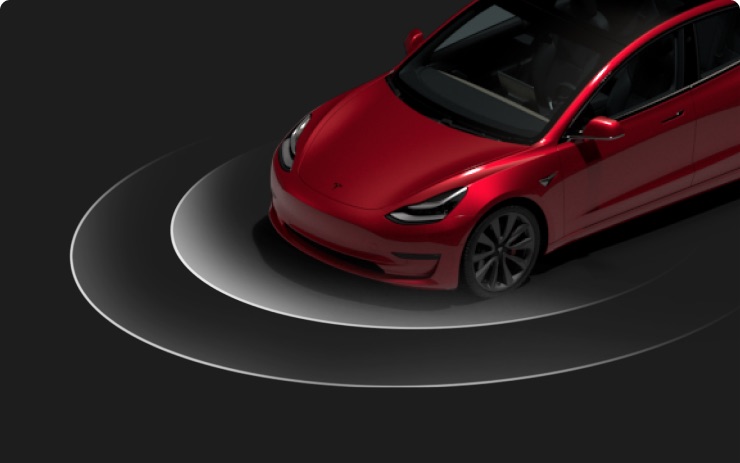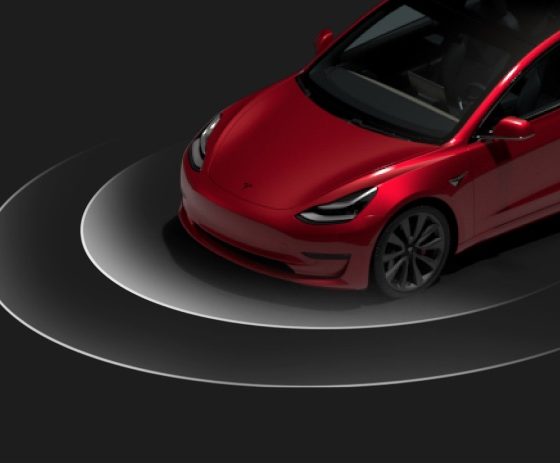

News
Tesla to release OTA update to disable Boombox features that may violate pedestrian warning standards
The National Highway Traffic Safety Administration (NHTSA) recently posted a new Safety Recall Notice for 578,607 Teslas over a potential issue with the vehicles’ Boombox feature. As per the document, some of Boombox’s capabilities may result in vehicles not being compliant with pedestrian warning standards.
The recent “recall” currently affects 2020-2022 Tesla Model S, 2020-2022 Tesla Model X, 2017-2022 Tesla Model 3, and 2020-2022 Tesla Model Y. The affected vehicles are equipped with external speakers that allow them to play varying sounds when they are in motion. Tesla’s Boombox feature is also played through the vehicles’ external speakers.
According to the NHTSA’s document, Federal Motor Vehicle Safety Standard No. 141 (FMVSS 141) outlines performance requirements for pedestrian alert sounds for hybrid and electric vehicles. It should be noted that the standard also prohibits manufacturers from altering or modifying the sounds emitting capability of a vehicle’s pedestrian warning system (PWS).
Teslas operating with firmware version 2020.48.25 and later are able to play custom sounds through their PWS speaker when they are parked or in motion using Boombox. Unfortunately, while Boombox and Tesla’s PWS system are mutually exclusive sounds, sounds emitted using Boombox — which are customizable — could be construed to obscure or prevent the PWS from complying with FMVSS 141 when the vehicle is in motion.
Boombox has been in Tesla’s vehicles since December 24, 2020, when the feature was rolled out as part of the 2020 Holiday Update. On January 15, 2021, the NHTSA issued an information request to investigate the feature’s compliance with FMVSS 141. Tesla responded to this information request on February 5, 2021, with the company explaining the feature’s performance and demonstrating its compliance with FMVSS 141.
Tesla continued to respond to additional information requests from the NHTSA about Boombox over the next several months. The company also participated in a number of virtual meetings with the agency. By September 9, 2021, the NHTSA “upgraded the investigation to a Preliminary Evaluation (PE-141-210104) and requested additional information from Tesla relating to Boombox’s compliance with FMVSS 141.” Tesla responded to the NHTSA’s request on October 18, 2021.
More discussions about Boombox’s compliance with FMVSS 141 were conducted by Tesla and the NHTSA on January 27 and 28, 2022. Ultimately, Tesla decided to initiate a voluntary “recall” on 578,607 vehicles on January 29, 2022, which would disable Boombox functionality in Drive, Neutral, and Reverse. The company would roll out the fix for the issue using an over-the-air software update.
This was outlined in the NHTSA Safety Recall Report’s section on the issue’s Remedy.
“Tesla will deploy an OTA firmware release to affected vehicles that will disable the Boombox functionality when the vehicle is in Drive, Neutral and Reverse modes. Firmware release 2021.43.101.2, which includes this remedy, was introduced in production on February 3, 2022. Firmware release 2022.8, which also includes this remedy, will deploy OTA to delivered vehicles in February 2022. No further action is necessary from owners whose vehicles are equipped with firmware release 2021.43.101.2 or 2022.8 or a later release. Undelivered vehicles will not be delivered to customers without 2021.43.101.2 or 2022.8 or a later release installed,” the document read.
The NHTSA’s Safety Recall Report on Tesla’s Boombox “recall” can be accessed below.
RCLRPT-22V063-8773 by Simon Alvarez on Scribd
Don’t hesitate to contact us with news tips. Just send a message to simon@teslarati.com to give us a heads up.

Elon Musk
Elon Musk’s X will start using a Tesla-like software update strategy
The initiative seems designed to accelerate updates to the social media platform, while maintaining maximum transparency.

Elon Musk’s social media platform X will adopt a Tesla-esque approach to software updates for its algorithm.
The initiative seems designed to accelerate updates to the social media platform, while maintaining maximum transparency.
X’s updates to its updates
As per Musk in a post on X, the social media company will be making a new algorithm to determine what organic and advertising posts are recommended to users. These updates would then be repeated every four weeks.
“We will make the new 𝕏 algorithm, including all code used to determine what organic and advertising posts are recommended to users, open source in 7 days. This will be repeated every 4 weeks, with comprehensive developer notes, to help you understand what changed,” Musk wrote in his post.
The initiative somewhat mirrors Tesla’s over-the-air update model, where vehicle software is regularly refined and pushed to users with detailed release notes. This should allow users to better understand the details of X’s every update and foster a healthy feedback loop for the social media platform.
xAI and X
X, formerly Twitter, has been acquired by Elon Musk’s artificial intelligence startup, xAI last year. Since then, xAI has seen a rapid rise in valuation. Following the company’s the company’s upsized $20 billion Series E funding round, estimates now suggest that xAI is worth tens about $230 to $235 billion. That’s several times larger than Tesla when Elon Musk received his controversial 2018 CEO Performance Award.
As per xAI, the Series E funding round attracted a diverse group of investors, including Valor Equity Partners, Stepstone Group, Fidelity Management & Research Company, Qatar Investment Authority, MGX, and Baron Capital Group, among others. Strategic partners NVIDIA and Cisco Investments also continued support for building the world’s largest GPU clusters.
News
Tesla FSD Supervised wins MotorTrend’s Best Driver Assistance Award
The decision marks a notable reversal for the publication from prior years, with judges citing major real-world improvements that pushed Tesla’s latest FSD software ahead of every competing ADAS system.

Tesla’s Full Self-Driving (Supervised) system has been named the best driver-assistance technology on the market, earning top honors at the 2026 MotorTrend Best Tech Awards.
The decision marks a notable reversal for the publication from prior years, with judges citing major real-world improvements that pushed Tesla’s latest FSD software ahead of every competing ADAS system. And it wasn’t even close.
MotorTrend reverses course
MotorTrend awarded Tesla FSD (Supervised) its 2026 Best Tech Driver Assistance title after extensive testing of the latest v14 software. The publication acknowledged that it had previously criticized earlier versions of FSD for erratic behavior and near-miss incidents, ultimately favoring rivals such as GM’s Super Cruise in earlier evaluations.
According to MotorTrend, the newest iteration of FSD resolved many of those shortcomings. Testers said v14 showed far smoother behavior in complex urban scenarios, including unprotected left turns, traffic circles, emergency vehicles, and dense city streets. While the system still requires constant driver supervision, judges concluded that no other advanced driver-assistance system currently matches its breadth of capability.
Unlike rival systems that rely on combinations of cameras, radar, lidar, and mapped highways, Tesla’s FSD operates using a camera-only approach and is capable of driving on city streets, rural roads, and freeways. MotorTrend stated that pure utility, the ability to handle nearly all road types, ultimately separated FSD from competitors like Ford BlueCruise, GM Super Cruise, and BMW’s Highway Assistant.
High cost and high capability
MotorTrend also addressed FSD’s pricing, which remains significantly higher than rival systems. Tesla currently charges $8,000 for a one-time purchase or $99 per month for a subscription, compared with far lower upfront and subscription costs from other automakers. The publication noted that the premium is justified given FSD’s unmatched scope and continuous software evolution.
Safety remained a central focus of the evaluation. While testers reported collision-free operation over thousands of miles, they noted ongoing concerns around FSD’s configurable driving modes, including options that allow aggressive driving and speeds beyond posted limits. MotorTrend emphasized that, like all Level 2 systems, FSD still depends on a fully attentive human driver at all times.
Despite those caveats, the publication concluded that Tesla’s rapid software progress fundamentally reshaped the competitive landscape. For drivers seeking the most capable hands-on driver-assistance system available today, MotorTrend concluded Tesla FSD (Supervised) now stands alone at the top.
News
Elon Musk’s Grokipedia surges to 5.6M articles, almost 79% of English Wikipedia
The explosive growth marks a major milestone for the AI-powered online encyclopedia, which was launched by Elon Musk’s xAI just months ago.

Elon Musk’s Grokipedia has grown to an impressive 5,615,201 articles as of today, closing in on 79% of the English Wikipedia’s current total of 7,119,376 articles.
The explosive growth marks a major milestone for the AI-powered online encyclopedia, which was launched by Elon Musk’s xAI just months ago. Needless to say, it would only be a matter of time before Grokipedia exceeds English Wikipedia in sheer volume.
Grokipedia’s rapid growth
xAI’s vision for Grokipedia emphasizes neutrality, while Grok’s reasoning capabilities allow for fast drafting and fact-checking. When Elon Musk announced the initiative in late September 2025, he noted that Grokipedia would be an improvement to Wikipedia because it would be designed to avoid bias.
At the time, Musk noted that Grokipedia “is a necessary step towards the xAI goal of understanding the Universe.”
Grokipedia was launched in late October, and while xAI was careful to list it only as Version 0.1 at the time, the online encyclopedia immediately earned praise. Wikipedia co-founder Larry Sanger highlighted the project’s innovative approach, noting how it leverages AI to fill knowledge gaps and enable rapid updates. Netizens also observed how Grokipedia tends to present articles in a more objective manner compared to Wikipedia, which is edited by humans.
Elon Musk’s ambitious plans
With 5,615,201 total articles, Grokipedia has now grown to almost 79% of English Wikipedia’s article base. This is incredibly quick, though Grokipedia remains text-only for now. xAI, for its part, has now updated the online encyclopedia’s iteration to v0.2.
Elon Musk has shared bold ideas for Grokipedia, including sending a record of the entire knowledge base to space as part of xAI’s mission to preserve and expand human understanding. At some point, Musk stated that Grokipedia will be renamed to Encyclopedia Galactica, and it will be sent to the cosmos.
“When Grokipedia is good enough (long way to go), we will change the name to Encyclopedia Galactica. It will be an open source distillation of all knowledge, including audio, images and video. Join xAI to help build the sci-fi version of the Library of Alexandria!” Musk wrote, adding in a later post that “Copies will be etched in stone and sent to the Moon, Mars and beyond. This time, it will not be lost.”








